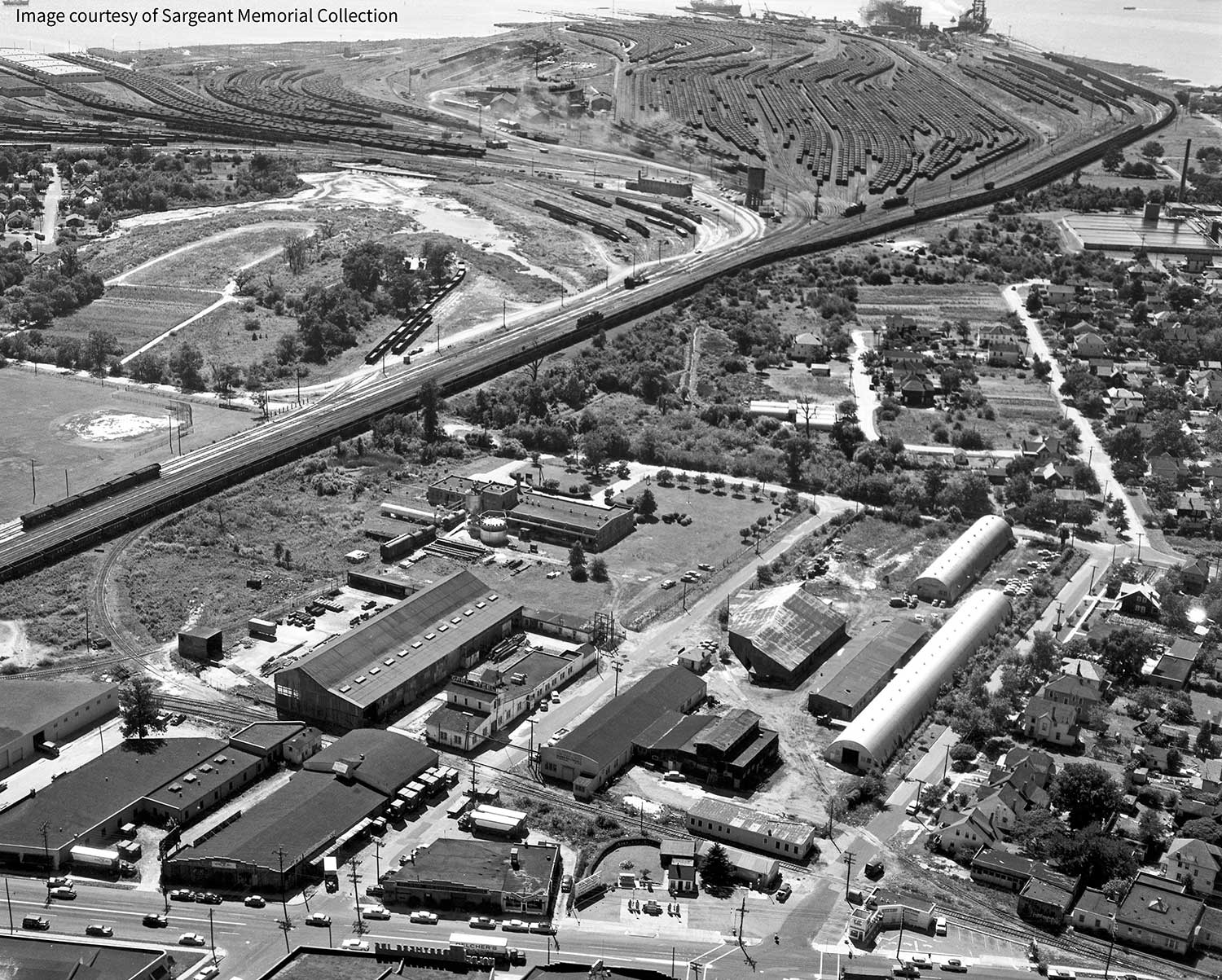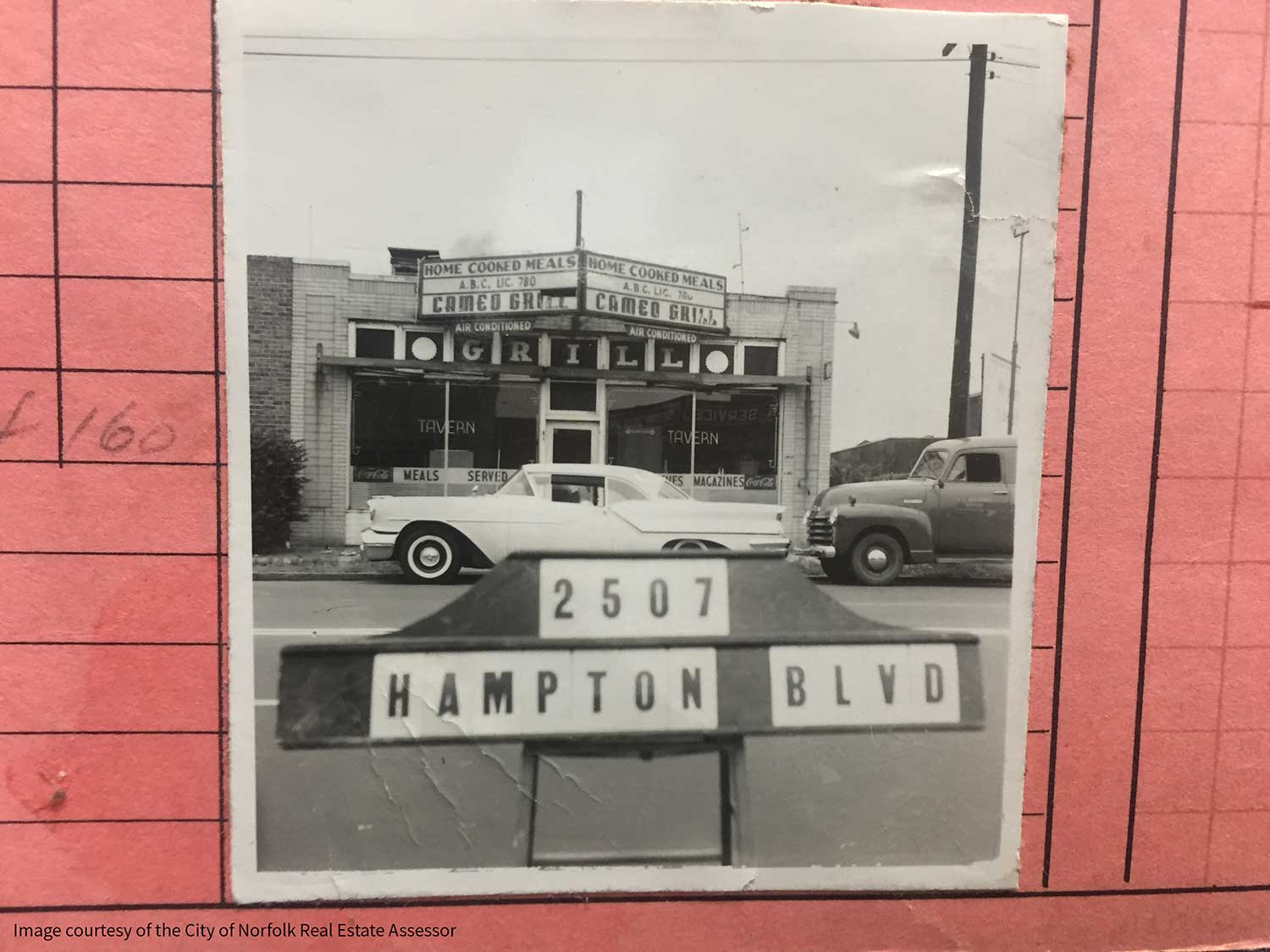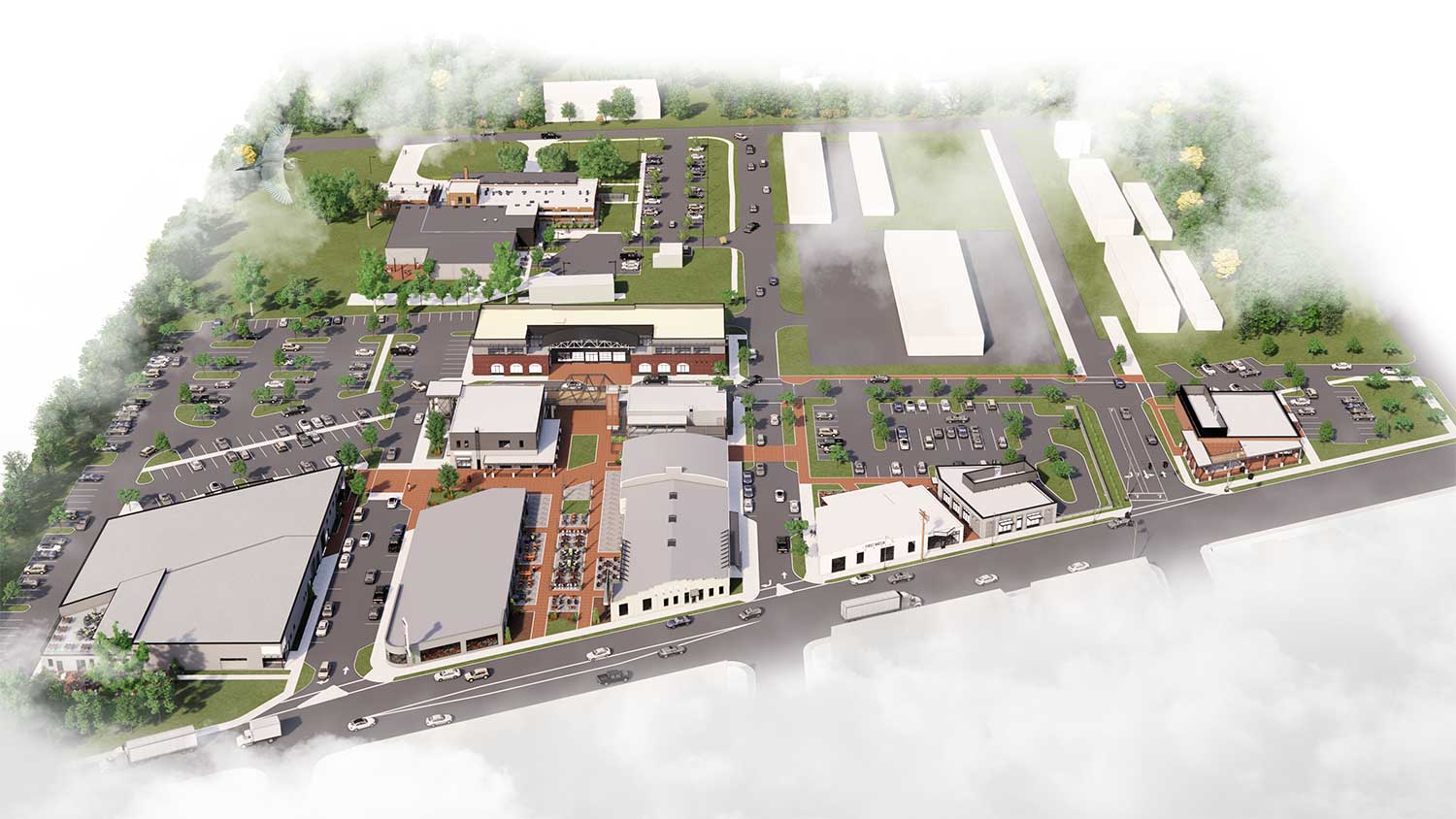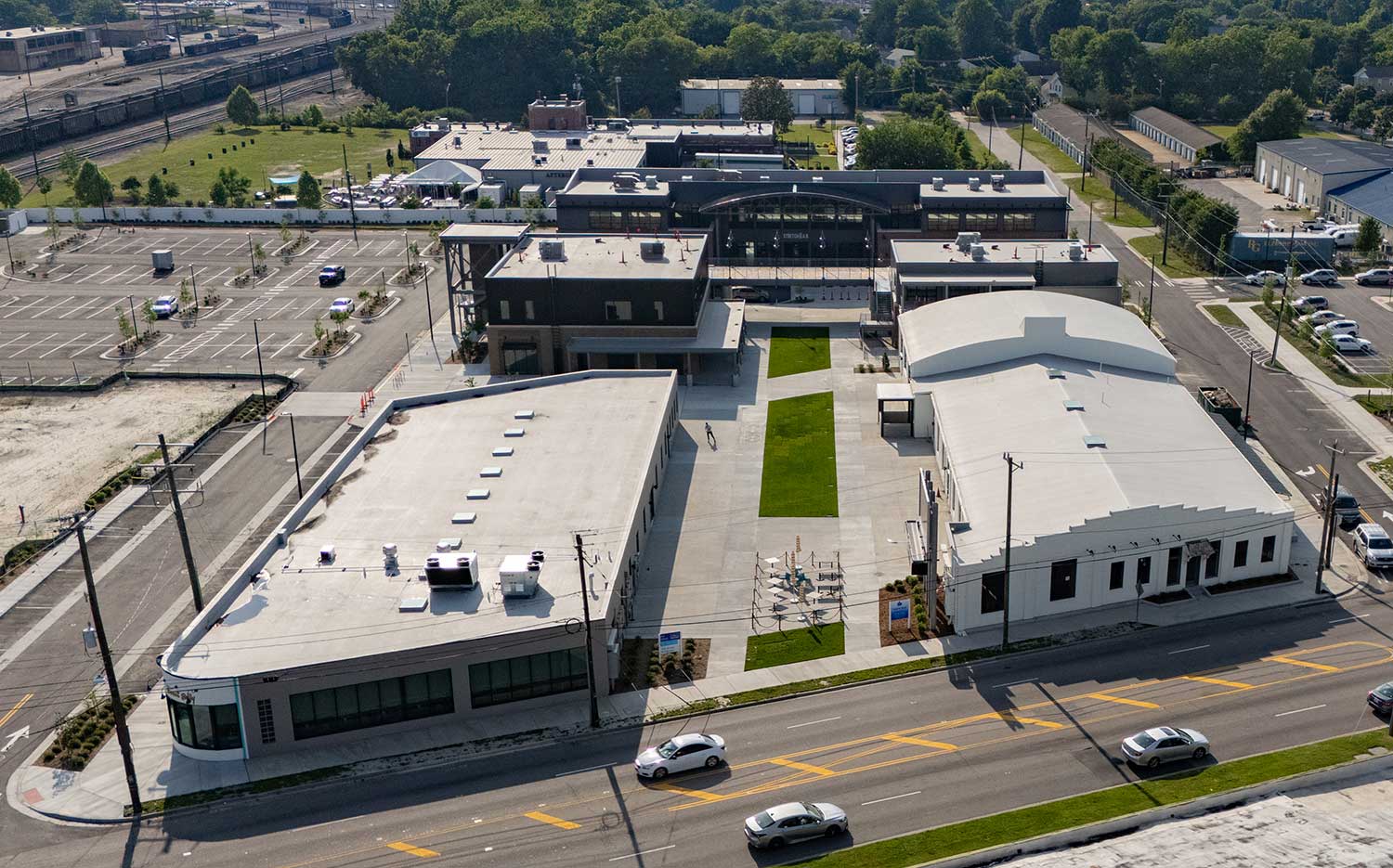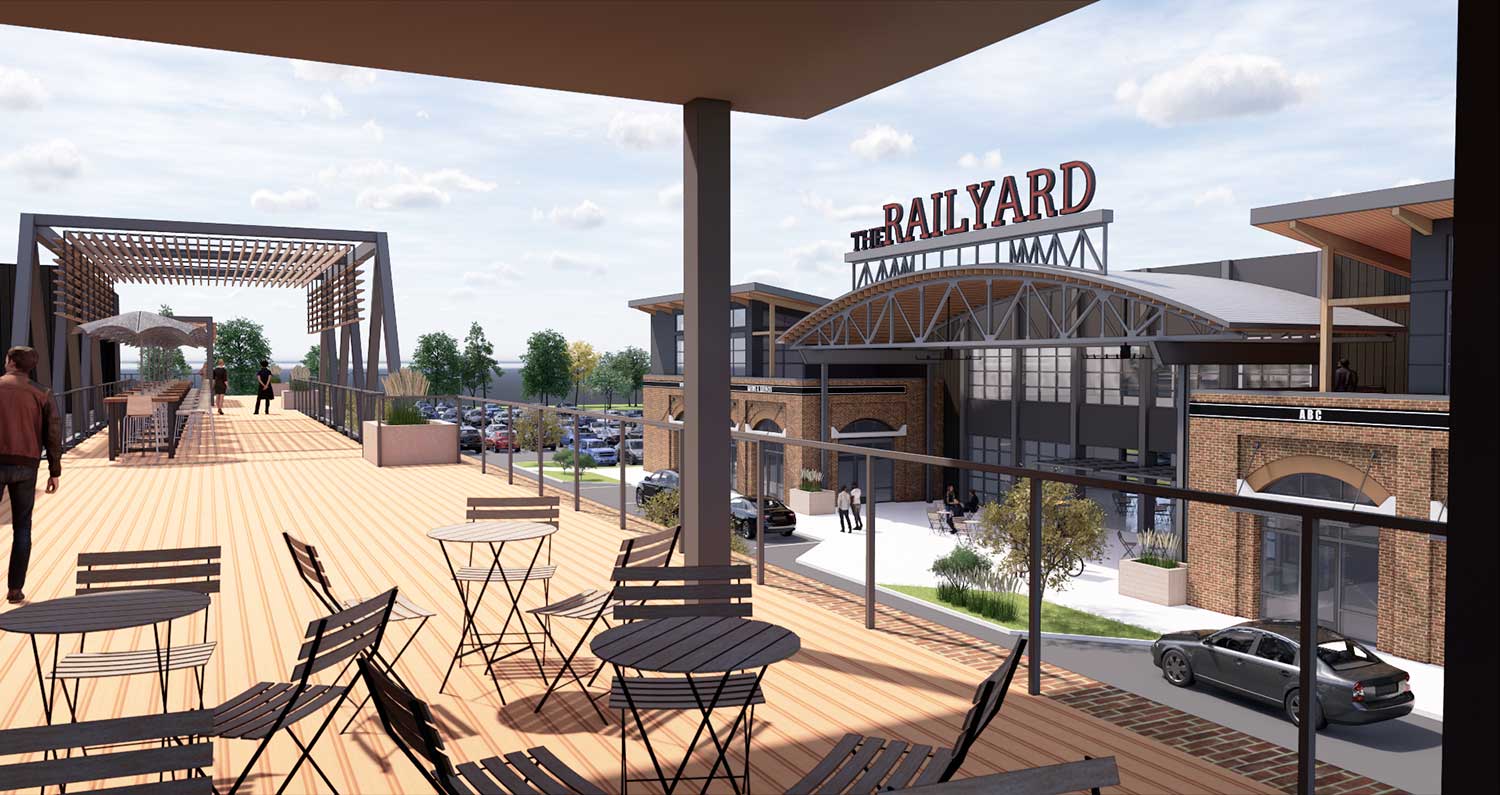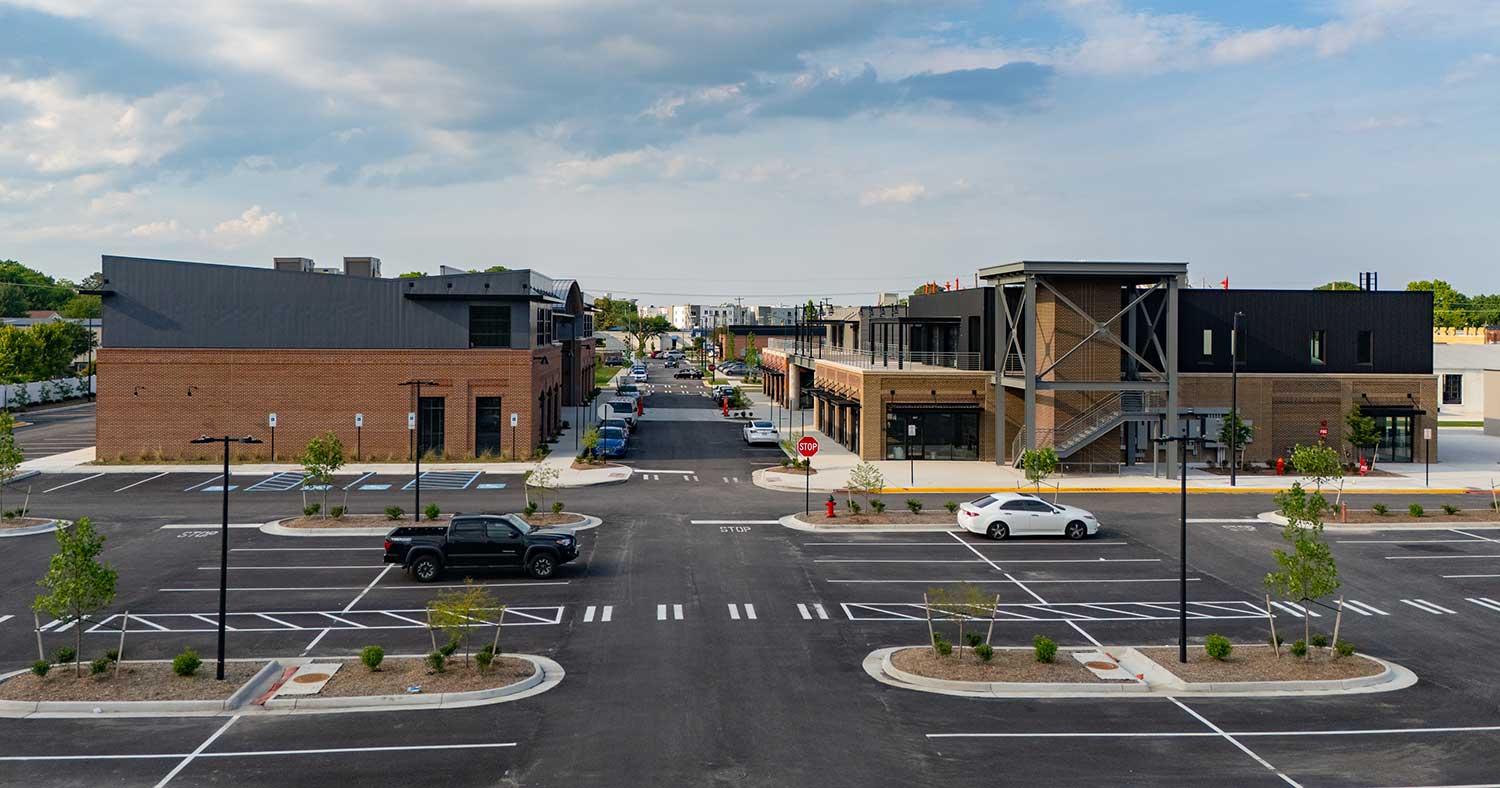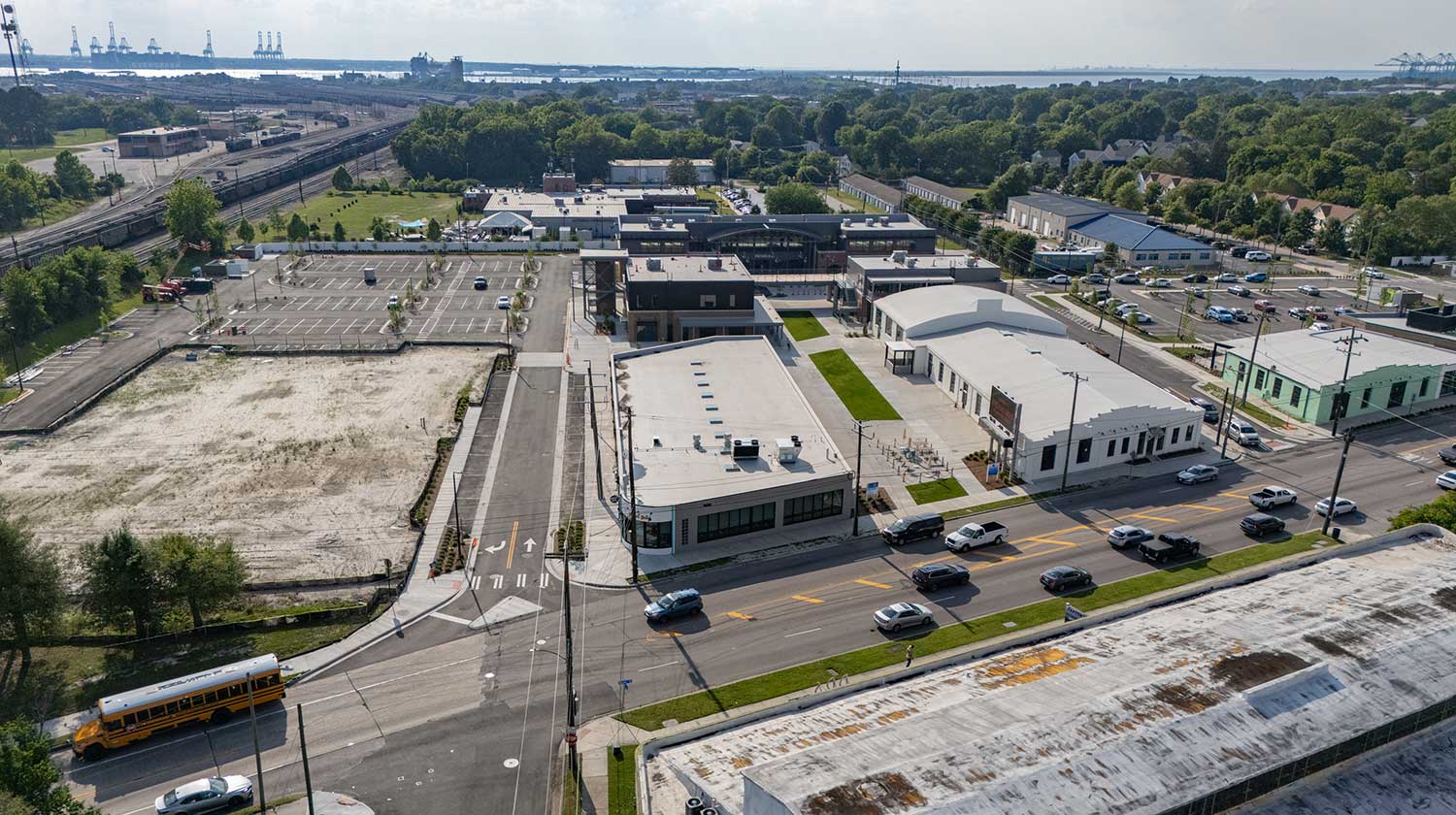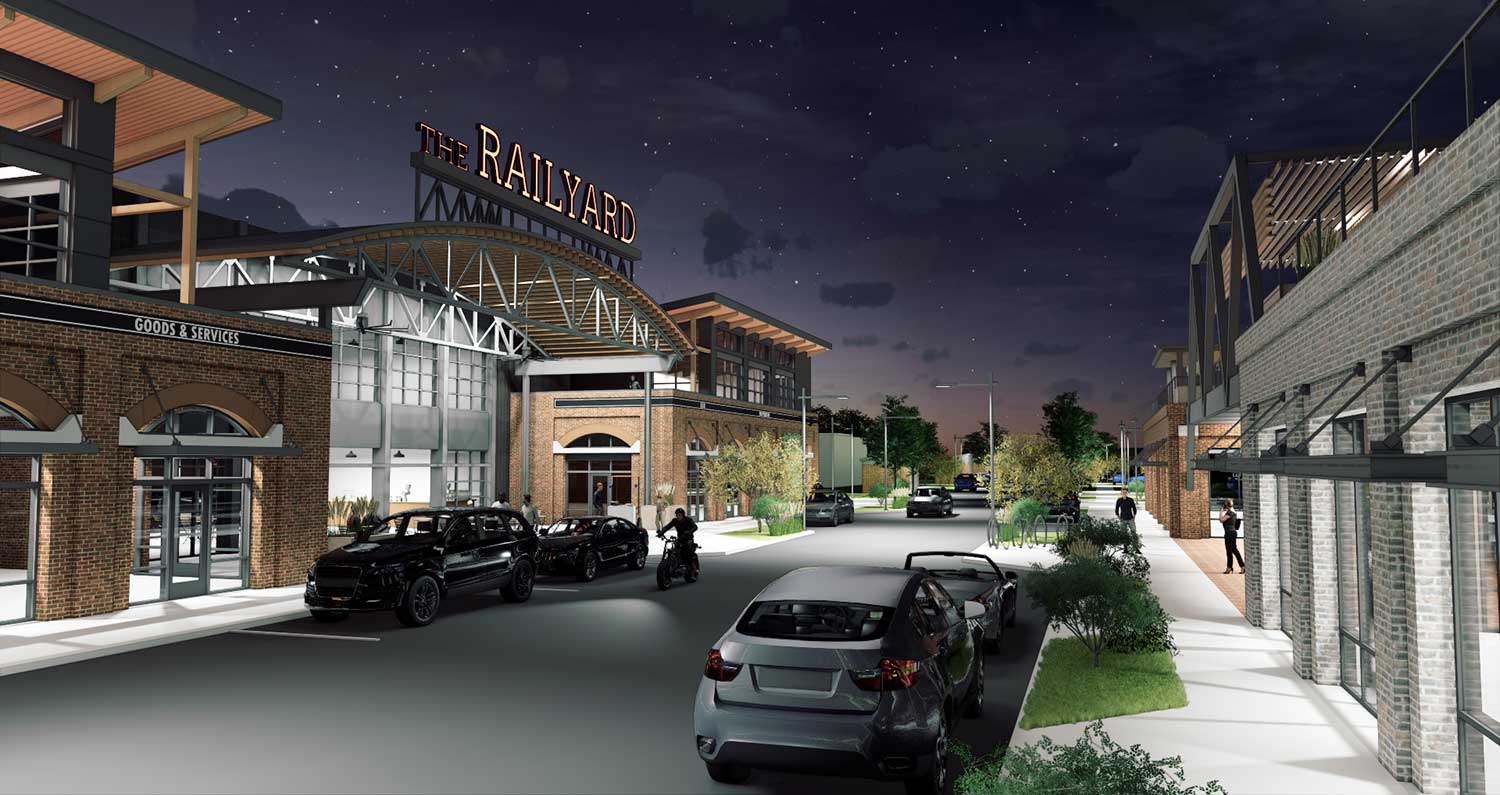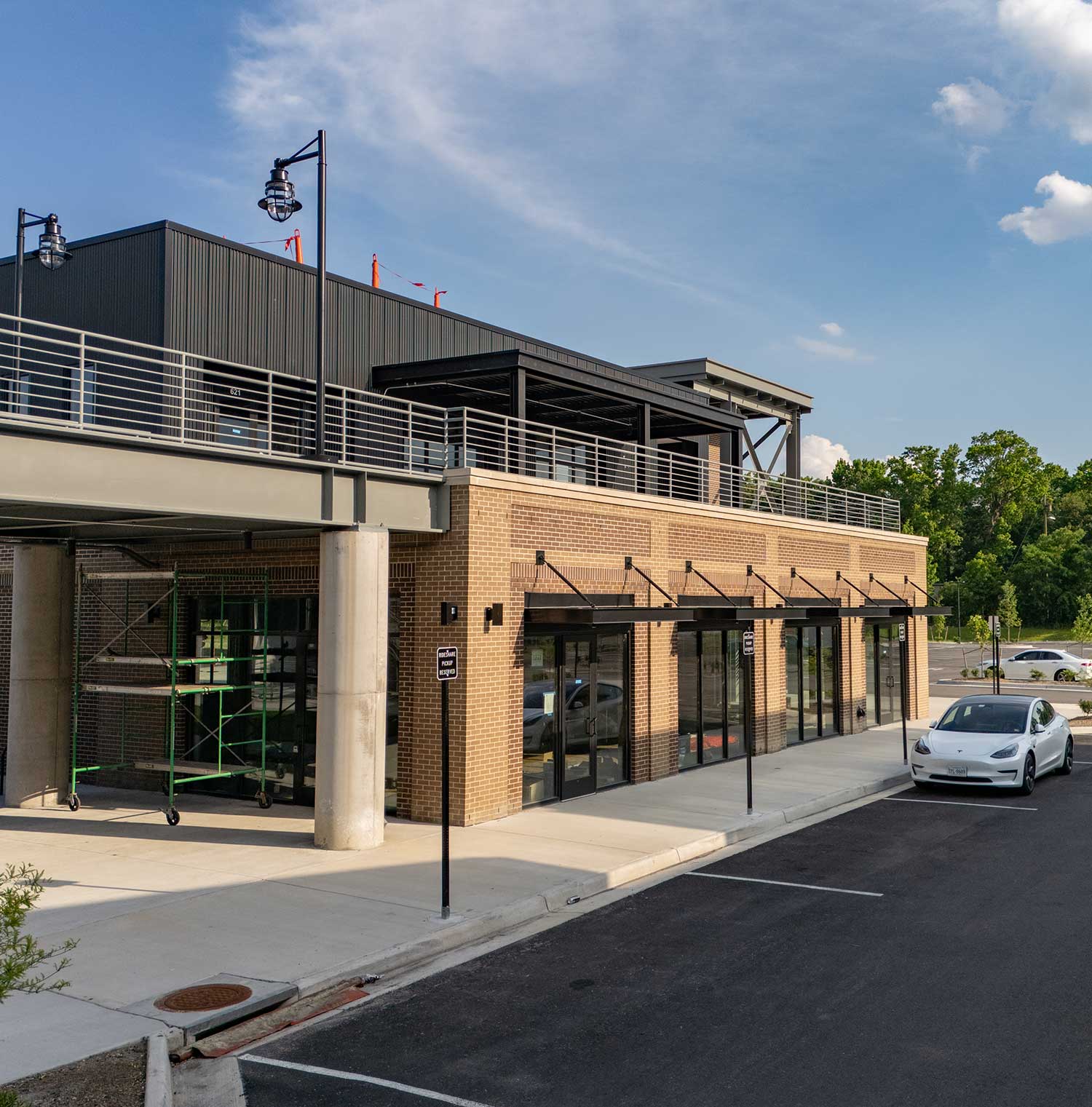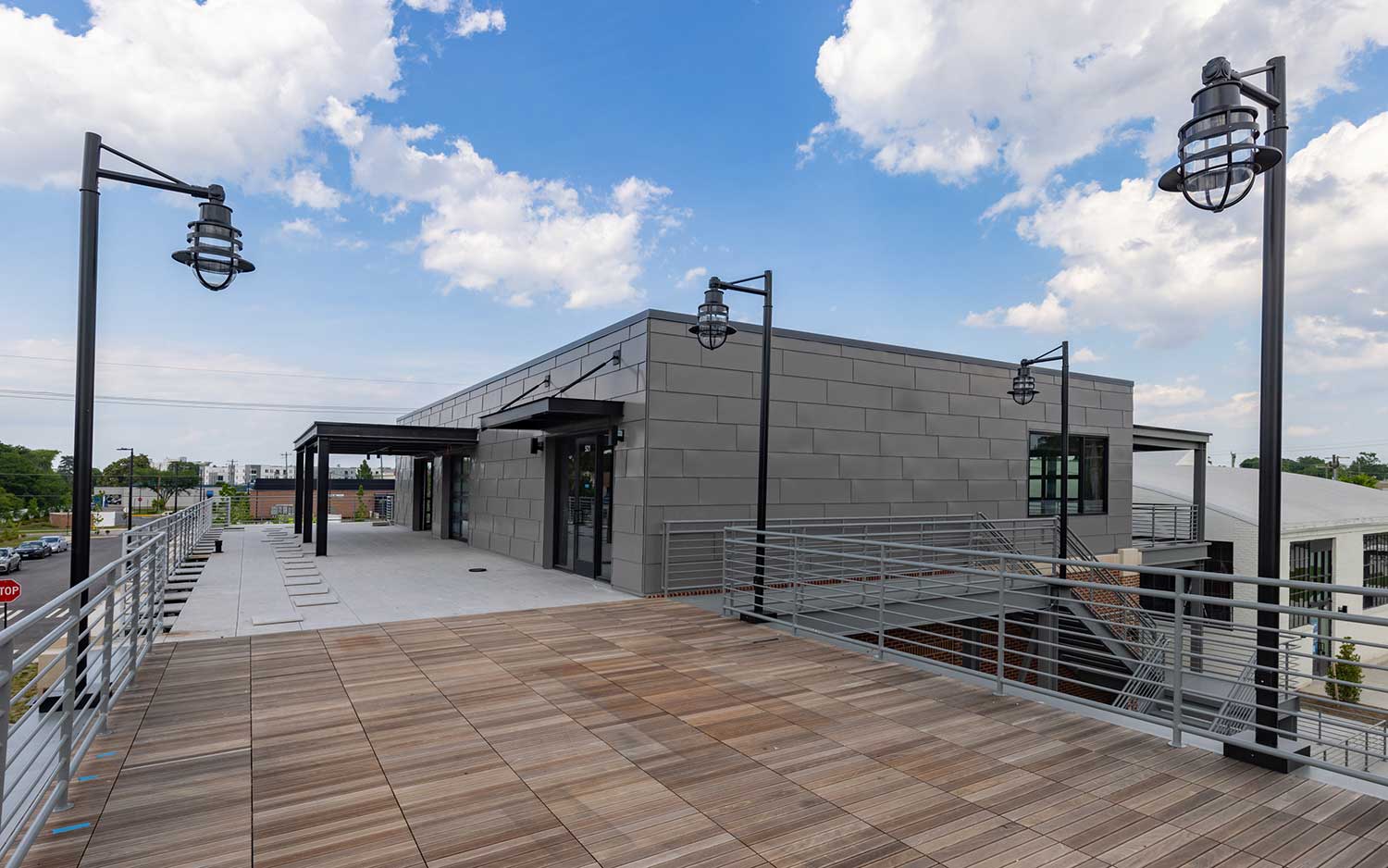After years of delays, the long-awaited redevelopment of the Lambert’s Point area is now fully realized. The Railyard, located along and behind Hampton Boulevard, has transformed into a vibrant mixed-use destination featuring retail, office, and entertainment spaces.
Meredith Construction, a Norfolk-based family business, spearheaded the project, partnering with Charlotte-based real estate group Clear Creek Brothers, LLC (CCB) to bring new life to this historic site. Work Program Architects (WPA) led the site planning, master planning, and design concepts, ensuring the development honored the area’s industrial past while fostering a dynamic, modern community.
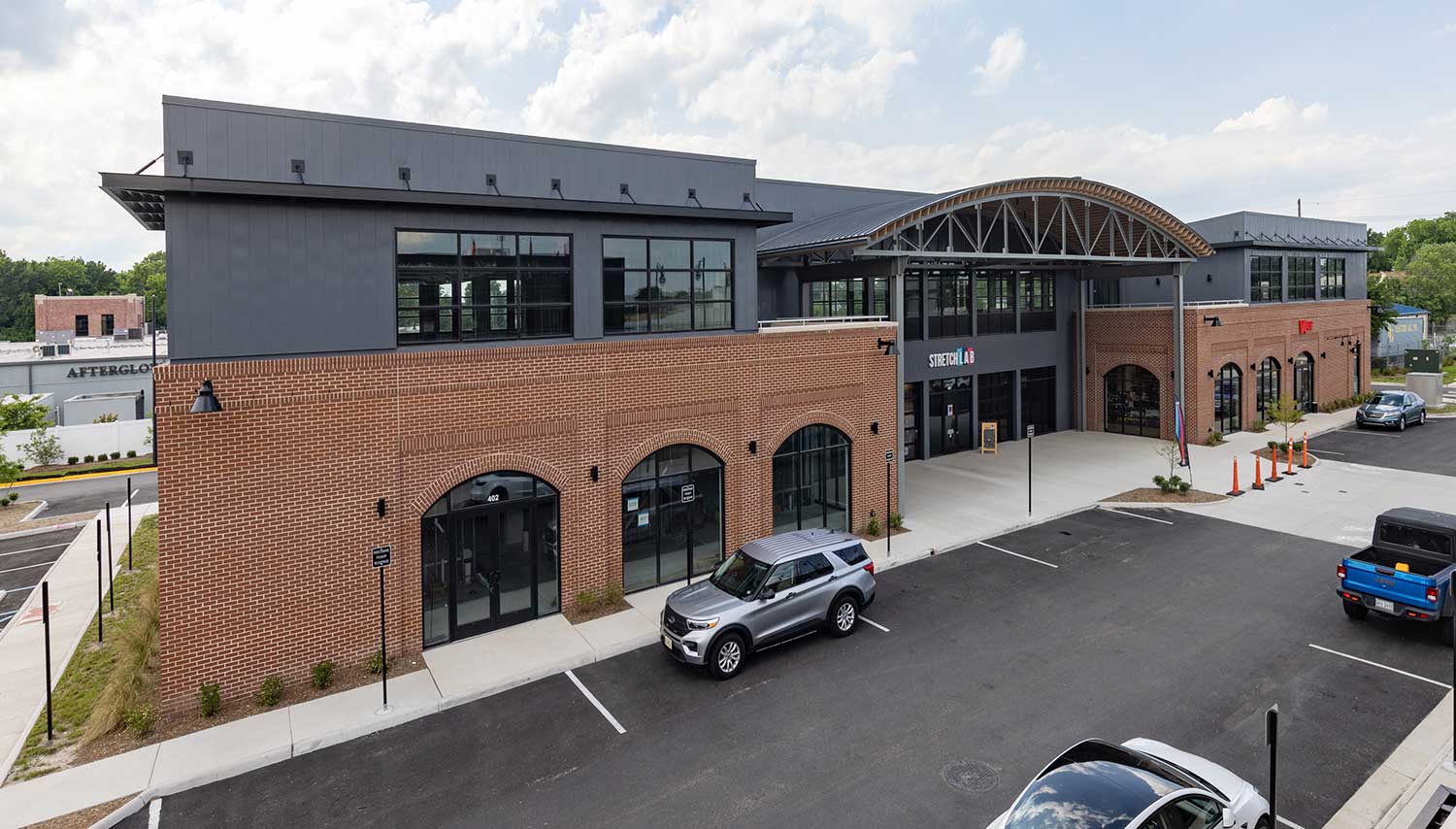
Meredith has long owned four of the five historic buildings on the site, which were constructed between 1920 and 1940. Two previously functioned as mini-storage facilities, while another—the former Hogshire Industries building—had remained vacant since 2010. Now, all these structures have been repurposed alongside five newly constructed buildings between W. 24th and W. 26th Streets. The development includes a diverse mix of retail, office space, casual and fine dining, a brewpub, and fitness and wellness spaces, all centered around an inviting outdoor courtyard. The courtyard features a stage for live events, space for a farmers market, and a historic train engine, serving as the backdrop for “The Railyard at Lambert’s Point” sign at the north end of the project.
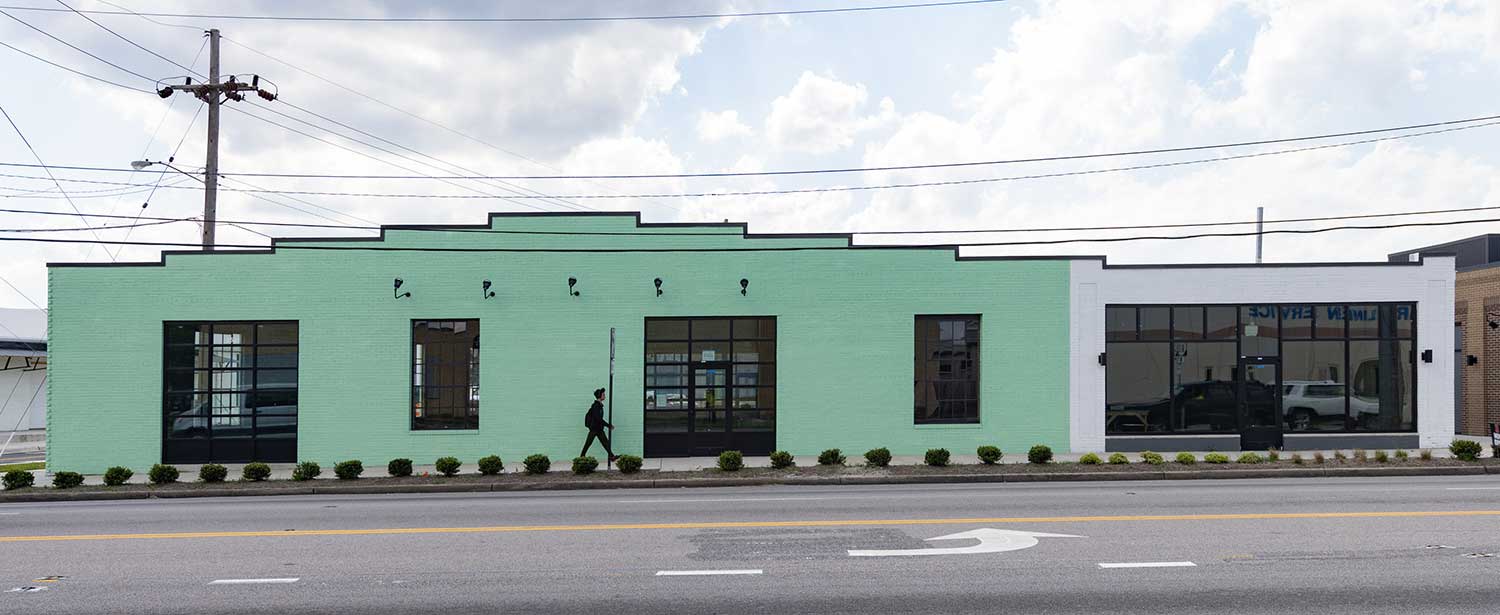
In designing the site, WPA carefully preserved the historic street grid. The original loading docks along 24th and 25th Streets have been retained, continuing their role in servicing businesses. Since Hampton Boulevard does not provide a comfortable pedestrian entryway, storefronts have been oriented toward the new courtyard and green space. Retail and restaurants now occupy the street level, with creative office spaces above. The design prioritizes walkability and multimodal access, incorporating pedestrian walkways, bike shelters, bike boxes, shared-mobility zones, and traffic-calming measures, with vehicle parking situated at the perimeter.
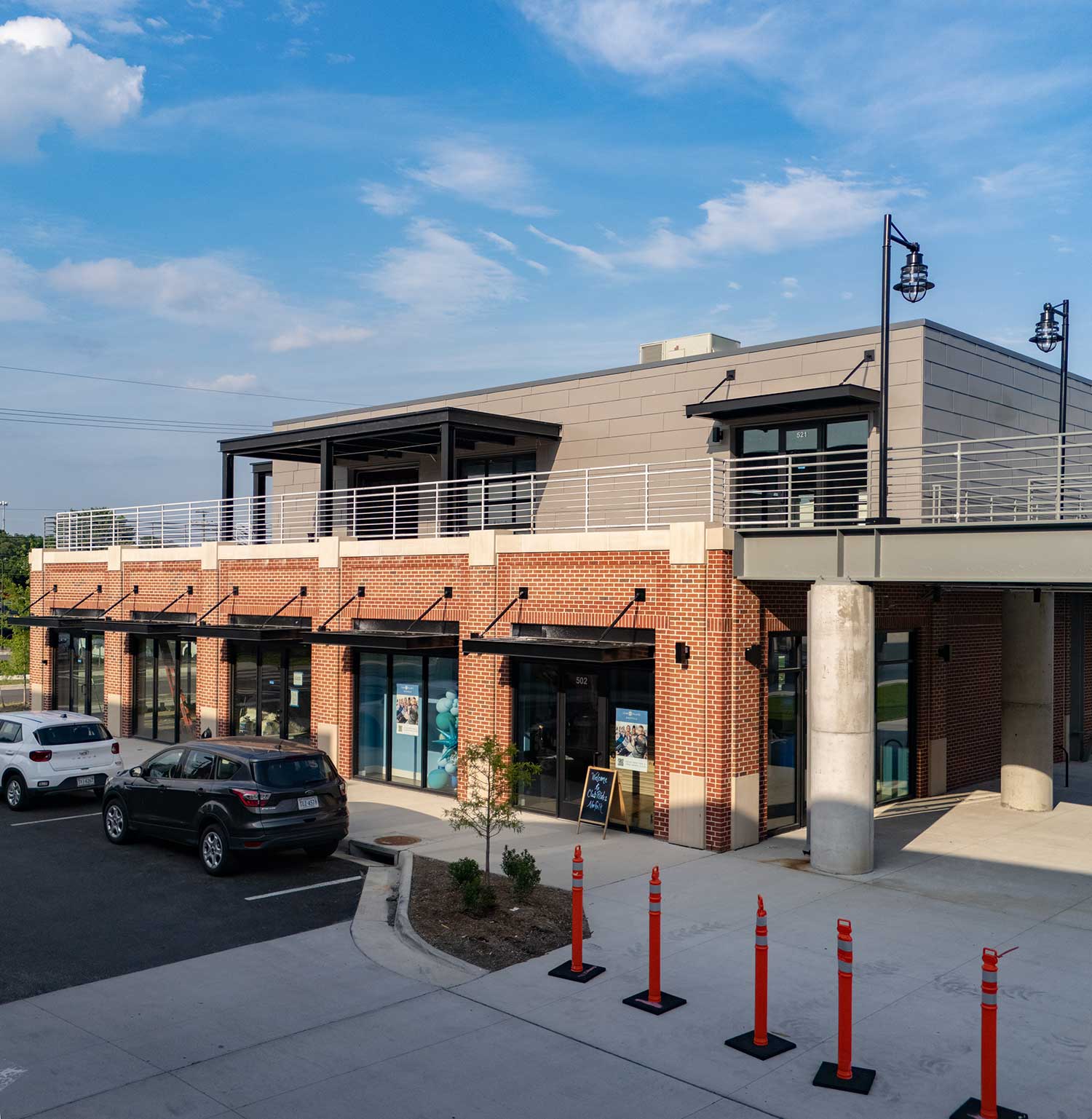
Each historic building retains its distinctive character. One structure features wooden columns reminiscent of trees, supporting a roof with restored skylights. Another boasts a barrel-vaulted ceiling, while the Hogshire building showcases its original steel beams, columns, and wood joists. Restored windows, historic signage, and awnings preserve the site’s industrial charm, while rooftop decks enhance outdoor dining and business spaces below.
The new buildings complement their historic counterparts, constructed with contemporary brick and steel while respecting the neighborhood’s architectural spirit. A striking trestle bridge, inspired by railroad trestles, connects two structures at the second level, offering outdoor access for upper-floor tenants. WPA also incorporated contemporary expressions of historic elements—such as an exterior steel truss marking one entrance, echoing the trusses of the barrel-vaulted building.

The Railyard sits along the Elizabeth River Trail, which has been extended and enhanced with new amenities. Nearby, IPConfigure, Inc., a leading video surveillance and software development company, has adapted the Dubin Metals Building on Bowdens Ferry Road into its headquarters—another project designed by WPA.
With a $30–$40 million investment, The Railyard now spans 109,200 square feet of new and revitalized space, supporting an estimated 350 jobs. This transformative development not only preserves Norfolk’s industrial history but also establishes a thriving hub for commerce, creativity, and community engagement.
